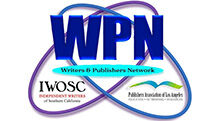By Pamela Ebel
“Now here, you see, it takes all the running you can do to keep in the same place. If you want to get somewhere else you must run at least twice as fast as that.”
Lewis Caroll
 As I read one report after another in 2024 and early 2025 about various businesses and political camps ramping up their assault on DEI programs in corporate workplaces, it became obvious that women writers, publishers, agents, and owners of support services were slipping down the corporate ladder into that infamous rabbit hole.
As I read one report after another in 2024 and early 2025 about various businesses and political camps ramping up their assault on DEI programs in corporate workplaces, it became obvious that women writers, publishers, agents, and owners of support services were slipping down the corporate ladder into that infamous rabbit hole.
Employers surveyed by LeanIn.org and McKinsey & Company in their Ten Year 2024 report, showed that gender diversity as a priority fell from 87 percent in 2019 to 78 percent the following year. Support for racial diversity was at 69 percent. The statistics have not improved.
https://leanin.org/women-in-the-workplace
Numbers, however, don’t show the real impact that the backslide in gender and racial diversity has on women writers and publishers. In 2020, based on an increased demand for works by people of color, and responding to the Black Lives Matter movement, Lisa Lucas was hired as publisher of Pantheon and Schocken Books, imprints of Penguin Random House. That same year, Reagan Arthur became EVP and publisher at Knopf.
In May of last year, both were laid off with vague explanations about responding to the necessities of future growth and shifting reader interests. Arthur returned to Hachette, but Lucas’ situation is still unclear.
What is clear from current reporting is that women are still expected to “run twice as fast” to improve their current situations in the writing and publishing industries.
“I do not wish women to have power over men; but over themselves!”
Mary Woollstonecraft
This visit to the land of the Red Queen is not meant to be an attack on male writers and publishers. It is, however, meant to show the reality, ages in the making, that gives men in all corporate settings an advantage over their female counterparts. The question always asked, and never answered clearly, is Why?
In my research I came across a study on discrimination and inequality based on gender in indie and traditional publishing in a most unlikely source.
In April of 2018, PLOS One, a nonprofit supporting research on a variety of topics, published a paper authored by Dana B. Weinberg and Adam Kapelan entitled Comparing gender discrimination and inequality in Indie and Traditional Publishing. https://journals.plos.org/plosone/article?id=10.1371/journal.pone.0195298
The study is extensive and takes a deep dive into the subject. What interested me besides the information shared, was the fact that since the report’s release in 2018 there has been no detailed follow-up research. This study is frequently the primary source of information used by a number of articles written in the ensuing six years, including this one. Again, the question—Why?
There were three major findings on gender discrimination supporting the continued perception that female writers’ works are worth less than those of their male counterparts. The discrimination is clearly marked by the price tag on the front of each book:
- The price reduction for female authors’ works in indie publishing was 7 percent less than those of male authors.
- In traditional publishing female authors’ works were priced, on average, 45 percent less than works by male authors.
- The price differentiation between works by female authors writing in female dominated genres and/or authors using traditional female names continued the discrimination by both traditional and indie publishers, with price gaps of 9 percent and 4 percent respectively.
- The research indicated the pricing bias was present even when female writers, agents, and publishers were the gatekeepers deciding the value of those works in the marketplace.
The researchers did note the statistics did not indicate if book pricing for bestselling authors of both sexes yielded different results.
The expectation for women to “run at least twice as fast” in the writing and publishing world also appeared in a study of women scientists, researchers, and physicians. Their publishing careers plummeted during the COVID-19 pandemic.
All of the traditional family and home responsibilities fell on the shoulders of many of those women during the lockdown years. Of the three million submissions to major medical journals in 2020, only 36 percent were from women.
These facts indicate that one of the major issues still remaining for women to overcome is the expectation that childcare and all that is involved is still primarily “women’s work.” BMJ 2023; 381 doi: https://doi.org/10.1136/bmj.p788 (Published 06 April 2023)Cite this as: BMJ 2023;381:p788
Still, reports in 2022 and 2023 touted the news that in 2020 the majority of all new books, fiction and nonfiction, were written by women. Information from the Library of Congress, the US Copyright Office, Amazon, and Goodreads showed women-authored books saw greater sales and readership than the average book penned by a male author. Missing from these reports is the pricing gap discussed earlier.
What wasn’t missing were discussions that suggested women were seeing a surge in presence because, since socialization studies indicate females don’t fare as well in the “in-person” corporate setting as men, writing as a solitary profession allows them to do their work without having to engage with others (meaning men) while still taking care of house, home, children, and other family members’ needs.
Once again, women need to “run at least twice as fast” to get to the writing and publishing world that men already inhabit.
The Growth of Female Authorship in the US Book Industry. Joel Waldfogel https://www.nber.org/digest/20234/growth-female-authorship-us-book-market
“Women are the real architects of society!”
Harriet Beecher Stowe
It is well known that women have been the backbone of the publishing industry for many years, but a 2023 study from Publisher’s Weekly noted that, while they made up 77 percent of people working in the industry, only 56 percent were to be found in management positions. Down a bit, perhaps, with the layoffs like those of Lisa Lucas and Reagan Arthur?
The good news, however, is found in a follow-up study by PW in 2024, finding a diverse group of women “running even faster” onto the Red Queen’s playing field. The 30 plus entrepreneurs in the article represent hybrid, independent, children, and underrepresented people in their publishing houses’ works.
Interviews with all of these women made it clear that they have lived with the Red Queen’s Effect long enough to see a way out of the Looking Glass and a way to climb up ladders that have no ceilings, glass or otherwise.
One crucial point they all shared was the realization that before you can succeed in the artistic journey, it is first necessary to understand and navigate the business of writing and publishing fiction and nonfiction.
What does it take to start the journey?
“No one can make you feel inferior without your consent!”
Eleanor Roosevelt
Conventional wisdom suggests that if one is free, equal, and independent, self-confidence should follow naturally. Yet in order to gain possession of these tripartite attributes, you have to define them. Merriam-Webster’s dictionary provides a starting point:
- Freedom: “Liberation or exemption from the control of some other person or some arbitrary power or restrictions…”
- Equality: “Having the necessary ability, strength, power, capacity, or courage to rise to a challenge…”
- Independence: “Freedom from the influence, control, or determination of another or others…”
The tripartite definition requires you to confront power and influence held by others that puts you at a significant disadvantage. How do we level the playing field?
Recall that the Tin Man wanted Oz to give him a heart, when in reality he already had one. He just needed the right circumstances to dig down inside and pull it out.
Women writers and publishers who want more control over their writing journeys need to assess the skills they already possess and create the path forward.
List all the knowledge and skills you possess. Then list the skills and knowledge required to be successful in the writing and publishing fields and match the two, noting areas where you need to acquire or improve those skills.
Learn to recognize those who pose a threat to your use of the power of self-determination and those who are willing and capable of helping you restore the power imbalance.
To do this, sharpen your basic communication skills:
First, analyze the situation. What is the issue that those with power are attempting to control? Who is attempting to keep you from engaging the issue appropriately? Why are they doing so? What forms of power, undue influence, and interference are being exerted to limit your ability to act appropriately?
Second, define the audience that needs to see and hear your message and analyze them to determine what type of communication device will be most likely to gain their attention and support. Then cultivate that message and surround yourself with those willing to help you gain the power and capacity needed to liberate yourself and develop self-confidence.
Third, analyze the opponent’s power source and how it appears in their communications. Then grant validity to that part of the message that is correct and adopt it into your position, and refute the rest of the message with valid arguments that dilute the opposition’s power.
Finally, work to create a message you can carry forward. Make clear who you are, what skills you have that provide personal power, influence, and self-determination, and make clear your ability and willingness to act courageously for yourself.
Help others achieve these attributes, because a person who is truly free, equal, and independent also knows that a rising tide floats all aspirants.
“If you’re not enjoying the journey, you probably won’t enjoy the destination.”
Joe Tye
If you’re feeling dissatisfied with current professional and personal opportunities, take some time and look into the changing landscape of the world you want to be a part of.
Remember the information shared at the beginning of this article indicating indie publishing doesn’t necessarily offer a more satisfying journey than traditional publishing. Understand the Red Queen will still appear to demand we “run twice as fast” if we want to get somewhere else, with no guarantee we will fare any better.
One thing I do know is forewarned and informed will make our travels easier and our destinations clearer and more satisfying.
“It makes you wonder. All the brilliant things we might have done with our lives if only we suspected we knew how.”
Ann Patchett, Bel Canto
About the Author
Pamela Ebel is the author of over 400 short stories, a number of which have appeared in Shotgun Honey, Yellow Mama webzine, Kings River Life magazine, The BOULD Awards 2020 and 2021 anthologies, Tomorrow and Tomorrow 2021 Anthology, The Yard: Crime Blog, and other venues. Her poetry has appeared in the Delta Poetry Review, and The Five-Two crime poetry weekly. She teaches a course on How to Write and Market Short Fiction and speaks on that topic, as well as The Legal Impact of Generative AI on Intellectual Property Rights, at various conferences. A native of California, she now concentrates on tales from her original home state and tales from the highways of the South. She knows, like the ancient Greeks and the Irish, that as a southern writer, you can’t outrun your blood. She turned to writing full-time in 2020, making this her fifth career. She lives in Metairie, Louisiana, with her husband and two cats.
